Some writers straddle genres, but Jeff VanderMeer’s fiction seems bound and determined to encompass as many styles and genres as it possibly can. Looking for metafictional body horror? Perhaps a detective novel set against the wars of an empire? Or maybe a paranoid thriller situated in the midst of a disintegrating landscape is more your speed. VanderMeer’s fiction brings together unlikely elements, smashes them together, and revives them with a frenetic urgency.
Delving into his fiction only showcases part of VanderMeer’s literary contributions. In recent years, he’s contributed introductions to new editions of books by the likes of Thomas Ligotti and Kirsten Bakis. Working in tandem with his wife, acclaimed editor Ann VanderMeer, he’s also involved in the publishing side of things: Cheeky Frawg Books has, most recently, released a massive collection of work by the surreal and dynamic Finnish writer Leena Krohn.
Keeping in mind, then, that this overview is not meant to be exhaustive, here’s a look at some of the shared settings, overlapping themes, and unsettling locales you’ll find in Jeff VanderMeer’s books.
Bizarre Cities
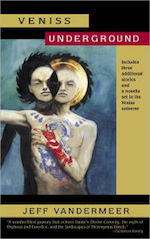 VanderMeer’s most recent novel, Borne, is set in a strange and unnamed city where genetic engineering has run wild, humans share the streets with sentient animals, and a giant flying bear named Mord strikes fear into the hearts of many an inhabitant. At the core of Borne is the story of Rachel, a young woman doing her best to survive amidst the chaos around her, and the bond that she forms with the title character, a strange shape-shifting creature of unknown origin who possesses abundant power and unsettling appetites.
VanderMeer’s most recent novel, Borne, is set in a strange and unnamed city where genetic engineering has run wild, humans share the streets with sentient animals, and a giant flying bear named Mord strikes fear into the hearts of many an inhabitant. At the core of Borne is the story of Rachel, a young woman doing her best to survive amidst the chaos around her, and the bond that she forms with the title character, a strange shape-shifting creature of unknown origin who possesses abundant power and unsettling appetites.
His novella The Strange Bird reveals more about the particulars of this setting: the title character is, in fact, a strange bird–but one haunted by memories of a different life. The novella serves as a further exploration of the location of Borne, and offers a more expansive look at one of the novel’s most intriguing supporting characters. But at its core, for all of its strange and sometimes visceral imagery, this is also a story that explores questions of memory and self.
VanderMeer addressed some of these same questions in his first novel, Veniss Underground, albeit in a setting that abounds with the grotesque and visceral. That includes sinister sentient meerkats, a city built inside of a massive fish, and unsustainable body modification. On one hand, it’s a quest narrative about a search for a missing person–but it’s structured in a way that demonstrates an incisive sense of experimentation. The way the novel’s three parts are nestled–including a narratively inventive use of the second person–showcases a sharp blending of form and content.
Ambergris
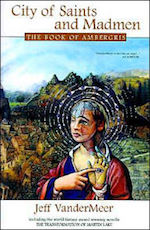 VanderMeer’s books set in the mysterious city of Ambergris are a bizarre, haunting, and thoroughly compelling piece of work–an astonishing bit of worldbuilding that allows him to tell stories that encompass everything from the rise and decline of an empire to the clash between two sentient species to a few sequences that approach body horror. (Fungal imagery abounds in these books, sometimes to a thoroughly transformative degree.)
VanderMeer’s books set in the mysterious city of Ambergris are a bizarre, haunting, and thoroughly compelling piece of work–an astonishing bit of worldbuilding that allows him to tell stories that encompass everything from the rise and decline of an empire to the clash between two sentient species to a few sequences that approach body horror. (Fungal imagery abounds in these books, sometimes to a thoroughly transformative degree.)
This trilogy also introduces a motif that he would continue in the Southern Reach books: namely, that each book reads quite differently than the others, even as the arc of a larger storyline advances through all of them. Through a series of shorter works, City of Saints and Madmen advances the history of the city of Ambergris, and the political and military intrigue that surrounds it. It also advances the heady, surreal tone, in which reality can feel subjective and sanity is at a premium.
Shriek (An Afterword) takes on a very different tone: the book is structured as a sort of metafictional narrative, with corrections and annotations presented as part of a found manuscript that illuminates both the city’s history and of two siblings whose lives encompass much of Ambergris society. (Nabokov’s Pale Fire comes to mind as a structural antecedent.) And Finch is a detective novel–albeit one set after the government of the city has undergone a radical shift. Each book stands on its own quite well, but the cumulative effect of all three is particularly potent.
Area X
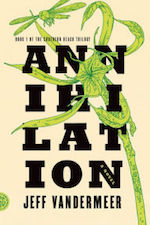 Jeff VanderMeer’s Southern Reach trilogy–three novels, all released within the span of a year–could accurately be described as his breakout work. (Alex Garland’s forthcoming film adaptation of Annihilation doesn’t hurt, either.) It retains much of the surreal imagery, shifting bodies, and questioning of the self that informed his earlier work, but is also set in a world recognizable as our own. Before the trilogy opens, something has altered a section of land known as Area X, turning it and the creatures that resided there into something much more alien.
Jeff VanderMeer’s Southern Reach trilogy–three novels, all released within the span of a year–could accurately be described as his breakout work. (Alex Garland’s forthcoming film adaptation of Annihilation doesn’t hurt, either.) It retains much of the surreal imagery, shifting bodies, and questioning of the self that informed his earlier work, but is also set in a world recognizable as our own. Before the trilogy opens, something has altered a section of land known as Area X, turning it and the creatures that resided there into something much more alien.
Each of the novels chronicles a different method of attempting to understand what took place at Area X. Stylistically, they take different approaches: Annihilation blends together a psychedelic strain of science fiction with traces of cosmic horror; Authority has echoes of a 1970s-style paranoid thriller; and Acceptance takes elements from both and turns them on their head. Taken in total, these novels also point to a question not unlike the ages-old one about the ship of Theseus: in a world where bodies can be modified, remade, and turned into something fundamentally altered, what makes us human? What separates the natural from the artificial–and should it matter? At the core of the bizarre imagery in these novels is an ages-old theme central to speculative fiction.
Short Fiction
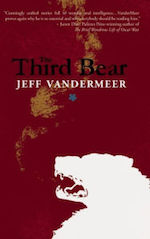 The Third Bear, VanderMeer’s 2010 short story collection, offers a fine survey of the many sides of his fiction. In some cases, that means a side of his work that his novels haven’t yet explored: “Finding Sonoria,” about a detective hired to locate a possibly imaginary country, and “Errata,” a foray into experimental narratives, obsession, and conspiracies, recall the metafictional and metaphysical pulp fiction of Brian Evenson.
The Third Bear, VanderMeer’s 2010 short story collection, offers a fine survey of the many sides of his fiction. In some cases, that means a side of his work that his novels haven’t yet explored: “Finding Sonoria,” about a detective hired to locate a possibly imaginary country, and “Errata,” a foray into experimental narratives, obsession, and conspiracies, recall the metafictional and metaphysical pulp fiction of Brian Evenson.
Readers of VanderMeer’s longer work will find strange echoes of some of his novels here, as well. “The Situation,” about dangerous office politics in a company dedicated to bizarre genetic experiments, reads like a precursor to some of the themes and settings that VanderMeer would develop in Borne. (Impossibly huge, existentially menacing bears show up in a couple of places in the collection, in fact.) And there’s also “The Quickening,” in which arguably the least threatening animal imaginable–a pet rabbit–accumulates a dense air of mystery and menace.
Non-Fiction and Anthologies
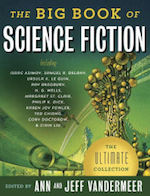 Wonderbook: The Illustrated Guide to Creating Imaginative Fiction is, as its subtitle indicates, a graphically rich look at the process of conceiving, writing, plotting, and editing fiction. It features contributions from a host of other writers and editors, and an abundance of irreverent-yet-profound illustrations that put some of the theories discussed in it into practice. If VanderMeer’s writings demonstrate the different ways that one can tell stories set in the same location, WonderBook makes a complementary point: that there’s no one right way to tell a story.
Wonderbook: The Illustrated Guide to Creating Imaginative Fiction is, as its subtitle indicates, a graphically rich look at the process of conceiving, writing, plotting, and editing fiction. It features contributions from a host of other writers and editors, and an abundance of irreverent-yet-profound illustrations that put some of the theories discussed in it into practice. If VanderMeer’s writings demonstrate the different ways that one can tell stories set in the same location, WonderBook makes a complementary point: that there’s no one right way to tell a story.
Jeff and Ann VanderMeer have edited a number of anthologies focusing on the history of a particular genre or subgenre. To cite two notable examples, The Weird found common ground for a host of seemingly disparate authors, encompassing work from Daphne Du Maurier, China Miéville, Laird Barron, Karen Joy Fowler, and Julio Cortazar. And 2016’s The Big Book of Science Fiction featured writers you might expect to find in such a book (Samuel R. Delany, Arthur C. Clarke, Cixin Liu), and others whose bodies of work might be less familiar (Kojo Laing, Silvina Ocampo, Valentina Zhuravlyova). The VanderMeers take on a wholly international scope in these books, and one of the joys of reading them is seeing how a wildly disparate group of writers handles similar concepts and themes.
 Tobias Carroll is the managing editor of Vol.1 Brooklyn. He is the author of the short story collection Transitory (Civil Coping Mechanisms) and the novel Reel (Rare Bird Books).
Tobias Carroll is the managing editor of Vol.1 Brooklyn. He is the author of the short story collection Transitory (Civil Coping Mechanisms) and the novel Reel (Rare Bird Books).










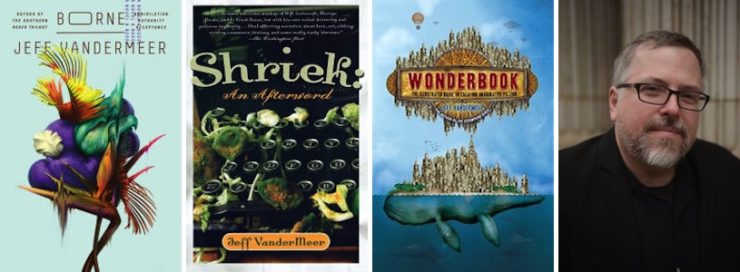
I love the Ambergris books. They were a distinct shock from the more conventional epic fantasy and SF that I was reading at the time. Shriek is still one of my favorite books. It’s one of those books where the structure is so unconventional, but the story wouldn’t have the same impact if it were told in any other way.
Where would you suggest to start with his work? Should I read his first novels first, or would I be better to start with the Borne or Ambergris series? I find the concepts fascinating, but have no idea where to start!
I started with City of Saints and Madmen. It made me a fan for life. Since it’s a few novellas and a bunch of short stories, there’s plenty of VanderMeer’s genre hopping to give you a sense of his style and tenor.
I also started with “City of Saints and Madmen” then moved on to “The Third Bear”. I love short stories so if an author has an anthology I’ll usually start with that. I just finished Southern Reach trilogy and it was weird, and that’s a compliment.